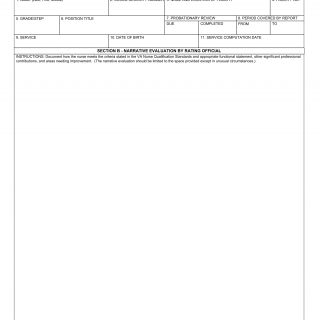VA Form 10-2623. Proficiency Report - Electronic Signatures
VA Form 10-2623, also known as the Proficiency Report - Electronic Signatures, is a document used by the Department of Veterans Affairs (VA) to assess the proficiency and competency of healthcare providers within the VA system. This form is primarily used to evaluate the performance of healthcare providers, including physicians, nurses, and other medical professionals.
The main purpose of VA Form 10-2623 is to provide a standardized format for assessing the proficiency of healthcare providers and ensuring that they meet the required standards of care. It helps in identifying areas of strength and areas that may require improvement. The form consists of several sections that capture essential information about the healthcare provider's performance and proficiency.
When filling out VA Form 10-2623, it is important to provide accurate and complete information. The form requires the following data:
- Personal Information: This includes the healthcare provider's name, contact information, and VA facility affiliation.
- Proficiency Assessment: This section assesses the healthcare provider's proficiency in specific areas of practice, such as clinical skills, patient care, communication, and professionalism. It may include rating scales, checkboxes, or open-ended questions.
- Performance Evaluation: This section allows supervisors or colleagues to provide feedback on the healthcare provider's performance, including strengths, weaknesses, and areas for improvement. It may include narrative descriptions or rating scales.
- Additional Documents: Depending on the specific requirements of the VA facility, additional supporting documents, such as patient case studies or performance metrics, may need to be attached to the form.
Examples of application and use cases for VA Form 10-2623 include:
- Performance Evaluation: The form is used to assess the proficiency of healthcare providers within the VA system, helping identify areas of excellence and areas that may require additional training or support.
- Professional Development: The form can be used to guide the professional development of healthcare providers by identifying areas for improvement and creating targeted training plans.
Strengths of VA Form 10-2623 may include its standardized format, which allows for consistent evaluation across different VA facilities. It provides a structured way to assess proficiency and identify areas for improvement.
Weaknesses of the form may include potential subjectivity in the evaluation process, as different supervisors or colleagues may have varying opinions on proficiency levels. It is important to ensure that the evaluation is fair and unbiased.
Opportunities for improvement may include incorporating performance metrics or objective measures to complement the subjective evaluation process, providing a more comprehensive assessment.
Threats related to the form may include the potential for incomplete or inaccurate information if healthcare providers do not take the evaluation process seriously or if supervisors do not provide thorough feedback.
Related forms within the VA system include VA Form 10-2623a. This form is used as an addendum to VA Form 10-2623 to provide additional information or clarification regarding the proficiency assessment.
Alternative forms or analogues outside the VA system may include Performance Evaluation Forms used by other healthcare organizations or institutions to assess the proficiency of healthcare providers.
The submission process for VA Form 10-2623 may vary depending on the specific VA facility. It is typically submitted electronically through a secure system within the VA network. The form is stored electronically in the healthcare provider's personnel file or a centralized database within the VA system.
Overall, VA Form 10-2623 plays a crucial role in evaluating the proficiency of healthcare providers within the VA system. It helps ensure that the highest standards of care are maintained and provides opportunities for professional development. It is important for healthcare providers to take the evaluation process seriously and for supervisors to provide fair and constructive feedback to support ongoing improvement.

